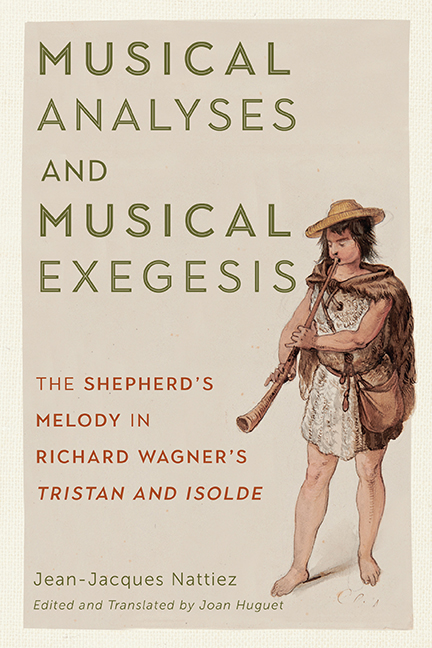 Musical Analyses and Musical Exegesis
Musical Analyses and Musical Exegesis Book contents
- Frontmatter
- Dedication
- Contents
- Foreword to the French Edition
- Preface
- Introduction: The English-Horn Solo, My Approach, and Models of Analysis and Musical Meaning
- Part I Immanent Analysis of the English-Horn Solo’s Musical Structures
- Part II Esthesic Analysis
- Part III Poietic Analysis
- Part IV Hermeneutics
- Conclusion: The Validity of Structural Analyses and Interpretations
- Bibliography
- Index
7 - Musical Sources for the Solo
Published online by Cambridge University Press: 02 June 2021
- Frontmatter
- Dedication
- Contents
- Foreword to the French Edition
- Preface
- Introduction: The English-Horn Solo, My Approach, and Models of Analysis and Musical Meaning
- Part I Immanent Analysis of the English-Horn Solo’s Musical Structures
- Part II Esthesic Analysis
- Part III Poietic Analysis
- Part IV Hermeneutics
- Conclusion: The Validity of Structural Analyses and Interpretations
- Bibliography
- Index
Summary
Poietics and Criticism
We will now turn to the solo's poietics. This branch of the tripartite division rests upon the two domains—source studies and sketch studies—that primarily comprise traditional historical musicology. These two elements of philological and historical study became essential to the field of literary criticism beginning with the works of Gustave Lanson (1857–1934). Gustave Rudler's brief masterpiece Les techniques de la critique et de l’histoire littéraires en littérature française moderne classifies and hierarchizes the different types of literary sources. I will not adopt Rudler's typology of sources, but will instead establish a related methodology that better suits the structure of my own study:
Sources that are directly identified by Wagner himself. We are fortunate that Wagner's writings include five texts that discuss the two melodies played by the shepherd for us to critically evaluate. Sometimes Wagner explicitly references them, while at other times he alludes to them in such a way that it is obvious he is discussing one or both of them.
By observing similarities between the shepherd's melody and other works, we can infer the works from other composers and repertoires that influenced Wagner. Following Rudler, I categorize sources based on how Wagner used them. At the very least, such music certainly would have served to spark Wagner's imagination, inspiring him at the broad level of genre or character. However, careful comparison of musical structures can reveal how Wagner was influenced by specific characteristics of these musical sources. I will distinguish between external information and internal indices, returning to the distinction that I made between external poietics and inductive poietics in my discussion of the tripartite structure.
My examination of musical sources, which will assume that Wagner consciously knew the pieces that I discuss, will create a new network of poietic meanings, in turn leading to different interpretations of the solo. As I discussed in part II, Jean Molino's studies of the history of hermeneutics have highlighted that historically there has been no entrenched division between philological, critical, and hermeneutic inquiry.
I will then consider and build upon these networks of meanings in light of what we know about Wagner's cultural and historical milieu. As I mentioned in the introduction, the entirety of this study is based on the methodological premise that we can only consider the broader contexts of these musical connections after examining each one's individual structure in detail.
- Type
- Chapter
- Information
- Musical Analyses and Musical ExegesisThe Shepherd's Melody in Richard Wagner's <I>Tristan and Isolde</I>, pp. 235 - 290Publisher: Boydell & BrewerPrint publication year: 2021


